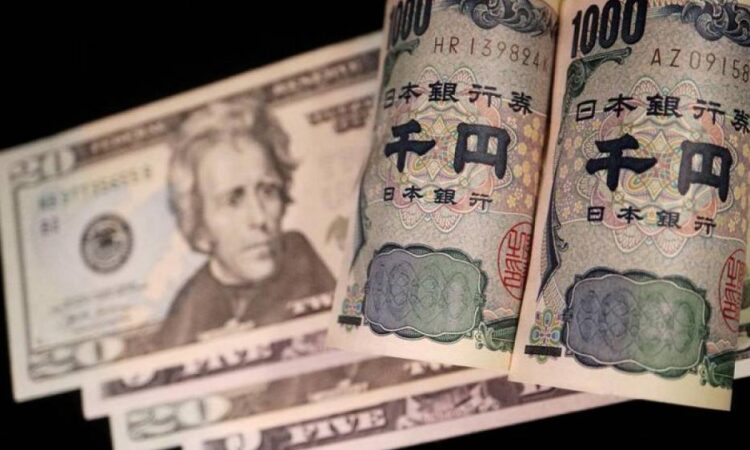
By Sinéad Carew and Carolyn Cohn
NEWYORK, LONDON – Wall Street stocks went into reverse after initially gaining at Friday’s open while the dollar was rising in a volatile session as investors digested Russia’ suggestion it would ease attacks against Ukraine, the British Prime Minister’s firing of her finance minister and the start of U.S. earnings season.
Sterling fell sharply against the greenback after UK Prime Minister Liz Truss fired Kwasi Kwarteng and scrapped parts of their economic package, which had caused uproar in financial markets. The dollar also continued rising against Japan’s beleaguered yen, hitting a fresh 32-year peak of 148.38.[FRX]
Meanwhile, after escalating attacks on Ukraine in recent days, Russian President Vladimir Putin said his call-up of Russian reservists would be over within two weeks and there were no plans for a further mobilisation and no need for massive new strikes on Ukraine as most designated targets were hit.
S&P futures had gained ground after Putin’s comments.
In U.S. Treasuries, benchmark 10-year yields gained some ground after data showed U.S. retail sales were unexpectedly flat in September as high inflation crimped demand. [US/]
Also on Friday, the third quarter earnings season kicked off on a positive note with reports from some of the biggest banks. Shares of JPMorgan Chase & Co, Wells Fargo & Co and Citigroup Inc rose after their reports.
“The bank earnings helped boost the market early but it started to fade as investors began to question yesterday’s move and if it has enough power behind it to carry us through the earnings season and the next Federal reserve meeting,” said Robert Pavlik, senior portfolio manager at Dakota Wealth in Fairfield, Connecticut.
“You saw some short covering yesterday. Eventually that gets played out. Investors are asking themselves was this the real bottom. I doubt it was. Why would I jump back in with so much uncertainty regarding the Federal Reserve, the war in Ukraine and the UK?”
U.S. stocks had a roller-coaster session on Thursday, falling sharply before reversing course dramatically after U.S. core inflation – which excludes food and fuel prices – came in above forecasts at 6.6%, the biggest annual increase in 40 years.
On Friday, the Dow Jones Industrial Average fell 58.31 points, or 0.19%, to 29,980.41, the S&P 500 lost 29.81 points, or 0.81%, to 3,640.1 and the Nasdaq Composite dropped 120.84 points, or 1.13%, to 10,528.31.
The pan-European STOXX 600 index rose 0.91% and MSCI‘s gauge of stocks across the globe shed 0.05%. Emerging market stocks rose 1.14%.
In currencies, sterling was last trading at $1.1242, down 0.77% on the day.
Friday was expected to be the last day of a bond buying program set up by the Bank of England to stabilise government bond, or gilt markets, after the market was spooked by unfunded tax cuts announced in a “mini-budget” last month.
The decisions by the UK prime minister on Friday appeared to give investors little confidence in her own position and the stability of UK markets.
“Political instability in the UK is just adding to the uncertainty in markets,” said Pavlik, adding that: “It becomes eerily similar to the financial crisis in 2008. We can’t be certain the U.S. is completely insulated from it.”
Also, the Japanese yen weakened 0.75% versus the greenback at 148.34 per dollar. Japanese Finance Minister Shunichi Suzuki on Thursday reiterated the government’s readiness to take steps against excessive currency volatility.
In U.S. Treasuries, yields edged higher as investors continued to digest Thursday’s red-hot U.S. inflation print and came to terms with the likelihood interest rates will stay higher for longer with the Federal Reserve’s policy rate potential moving closer to 5%. [US/]
Benchmark 10-year notes were up 2.9 basis points to 3.983%, from 3.954% late on Thursday. The 30-year bond was last up 2.5 basis points to yield 3.9579%, from 3.933%. The 2-year note was last was up 4.3 basis points to yield 4.4917%, from 4.449%.
Oil prices sank in a choppy session as fears of a global recession and weak oil demand, especially in China, outweighed support from a large cut to the OPEC+ supply target. [O/R]
U.S. crude was down 3.29% to $86.18 per barrel and Brent was at $91.99, down 2.73% on the day.
Gold prices fell more than 1% and were on track for their biggest weekly decline in nearly two months, due to the stronger U.S. dollar and worries about higher interest rates.
Spot gold dropped 0.9% to $1,650.39 an ounce. U.S. gold futures fell 1.34% to $1,647.60 an ounce.






